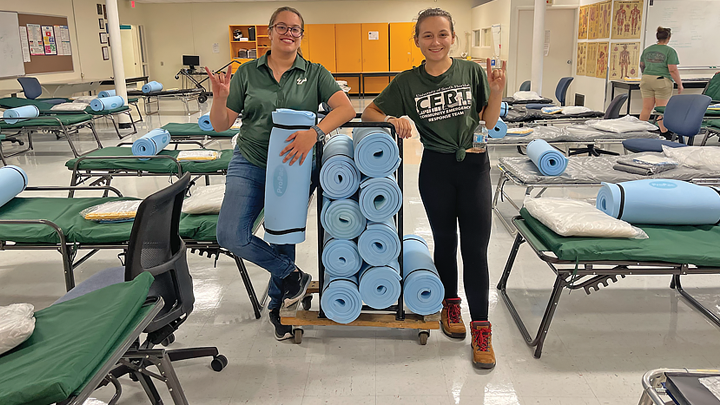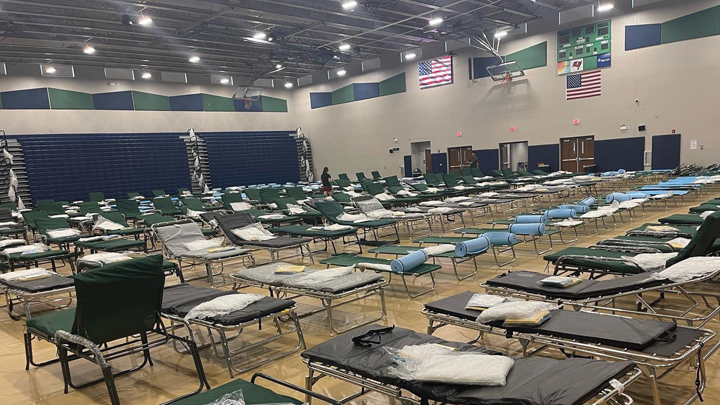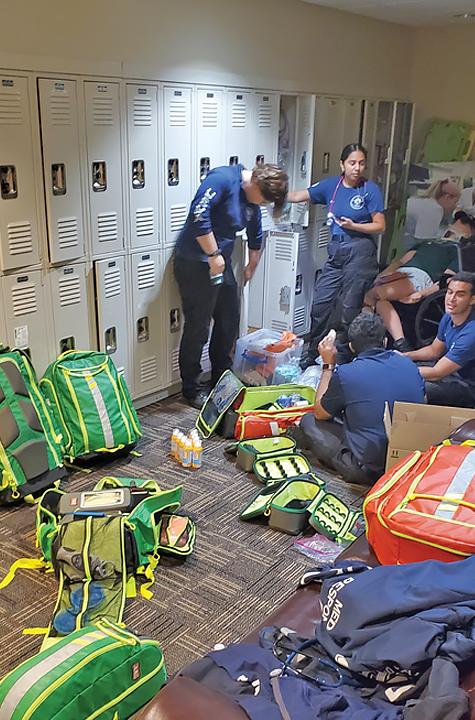Department
Faculty, staff, students join response to Hurricane Ian



USF News
AS SOON AS HURRICANE IAN SWEPT THROUGH Fort Myers and its vicinity on Sept. 28, USF community members sprang into action. From collecting donations to hosting cleanup missions and lending professional expertise, faculty, staff and students are continuing efforts to support those in need.
- More than 50 USF students volunteered at hurricane evacuation shelters as part of USF’s ongoing partnership with Hillsborough County. The USF Community Emergency Response Team helped set up and manage 16 general population shelters, special needs shelters and emergency pet shelters. Additionally, the Florida Department of Health deployed the USF Medical Response Unit’s Specialized Disaster Response Team to the largest special needs shelter in the county, which housed more than 300 evacuated patients and caregivers.
- Mental health experts Chris Groeber and Pam Alvarez from the College of Behavioral and Community Sciences have been providing support to those directly impacted by the storm. They work closely with the Department of Children & Families and have launched a series of online discussions, giving employees a platform to share their stories of survival.
- Christa Remington, assistant professor of public administration, has launched a study on the value of social capital in a disaster. She’s focusing on what are called “zero responders” — individuals who are first on the scene, before firetrucks and ambulances arrive. She’s working with public officials, FEMA personnel and local nonprofit leaders in the Fort Myers area to discuss how they can leverage social ties and build greater synergy between them, and the grassroots efforts led by local volunteers.
- USF Health collected donations to assist with ongoing relief efforts, such as delivering medical and non-medical supplies and equipment. Faculty, staff, medical residents and students will continue to assist communities for months to come.
- Geveryl Robinson, vice president faculty liaison for the Black Faculty and Staff Association, led efforts to work with various community groups to organize collection sites and delivered more than 60 bags of supplies to help residents of Dunbar — a predominantly Black community in Lee County.
- College of Nursing faculty and staff volunteered at Swift Action Force Emergency camps, providing expertise in the medical tent and distributing food and water to families. Members of Student Government on the USF Sarasota-Manatee campus helped clean up debris surrounding damaged schools. The Florida Small Business Development Center located at USF is educating the community about available disaster relief programs.
- Nearly 4% of USF students are from southwest Florida. USF is helping support these students through the United Support Fund, which was established during the pandemic to provide a safety net that allows Bulls to focus on their studies. To contribute, visit giving.usf.edu/online/gift/g/UWE7.